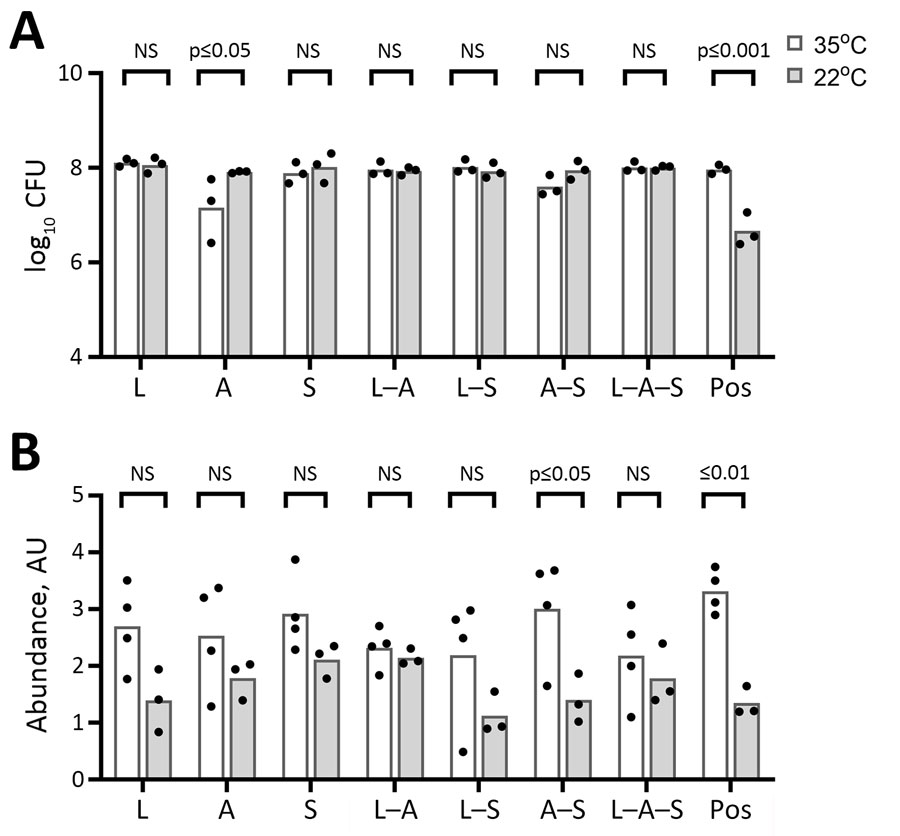Volume 30, Number 9—September 2024
Research
Formation of Single-Species and Multispecies Biofilm by Isolates from Septic Transfusion Reactions in Platelet Bag Model
Figure 3

Figure 3. Effects of different incubation temperatures (22°C vs. 35°C) on biofilm CFU recovered (A) and CV biofilm formation (B) on platelet bag coupons after 24 hours of incubation in APH PLT. Baseline readings of TSBG and APH PLT with no bacteria were subtracted from the readings at OD550. Incubation temperature showed no significant effect on quantitative monomicrobial or polymicrobial bacterial growth in APH PLTs, except for Acinetobacter spp. alone, which was lower at 35°C. There was a trend of decreased bound CV at room temperature for all bacteria, but only the Acinetobacter spp./S. saprophyticus combination showed statistically significant reduction between 35°C and 22°C. Each dot represents an individual biologic replicate inoculated with the corresponding monomicrobial or polymicrobial bacterial species. A, Acinetobacter spp.; APH PLT, apheresis platelets; AU, absorbance unit; CV, crystal violet; L, Leclercia adecarboxylata; NS, not significant; OD, optical density; pos, positive control (Staphylococcus epidermidis); S, S. saprophyticus; TSBG, tryptic soy broth–glucose.